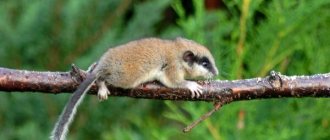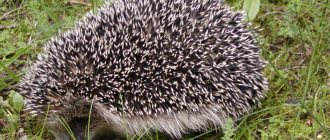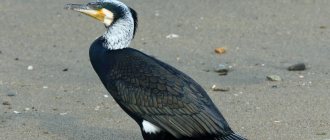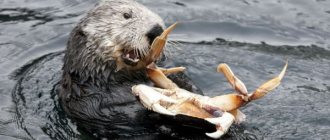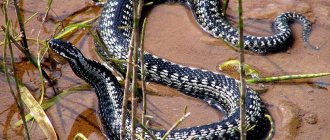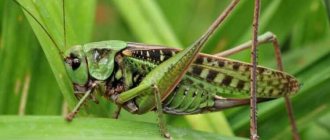In North America, or more precisely in the northern states of the USA and Canada. There is a very rare species of bear called the grizzly. Several centuries ago, during the Great Geographical Discoveries, the British came to North America. There they met an unusual bear, whose fur was completely gray. That's why he got his name Grizzly, which means gray bear.
Grizzly bear range
Apart from its size and coat color, it is practically no different from the brown bear that lives in Eurasia. If you look closely, the wool bears little resemblance to gray, as it is brown in color.
Grizzly bear: description
Grizzly bears, like their fellow brown and polar bears, as well as foxes and raccoons, have common ancestors that lived on our Planet about 30 million years ago. In fact, this is very difficult to believe. These ancestors inhabited the Euro-Asian continent, but were not distinguished by their impressive size and led an arboreal way of life.
After they moved to North America, there were up to 80 species of these bears, at least that’s what experts previously thought. After science advanced greatly and scientists were able to uncover the secret of genes, it became known that grizzly bears are a simple subspecies of European brown bears. Today, experts distinguish the continental and coastal forms of modern grizzly bears. Moreover, they are part of a group that has received an official interpretation - brown bears.
Interesting fact! The total number of grizzly bears at the beginning of the last century was more than 100 thousand individuals.
Since humans began to actively interfere with the habitat of these animals, these predators began to attack farms, domestic animals, and often even humans themselves. Because of this, people began to exterminate such animals en masse, which led to a sharp reduction in the total number of these predators. Uncontrolled shooting reduced the population of grizzly bears by almost 30 times, which is why it had to be included in the International Red Book. Today, grizzly bears live exclusively in protected areas. This predator is one of the ten most dangerous mammals of prey to humans.
Grizzly bear - interesting facts
Appearance and features
The predator got its name due to the specific color of its fur. This happened when this mighty beast was first seen by settlers who appeared in the North American forests. The grizzly bear differs from the brown bear in fact by its smoky coat color.
The predator is characterized by the following physical characteristics:
- The weight of adult individuals reaches 1000 kilograms.
- Height at the withers is almost 2 meters.
- The body length is almost 4 meters.
It should be noted that females are not so huge in size. These are such strong predators that with one blow of their paw they are able to break the back of any victim, which does not give it any chance of survival.
Grizzly bears' paws are armed with 15-centimeter curved claws, which are extremely sharp. The presence of such claws noticeably distinguishes this predator among its relatives. Unfortunately, these same claws do not allow this predator to climb trees, unlike an ordinary brown bear. These are muscular animals whose body is covered with thick and coarse hair. If you look at it from a close distance, the color of the grizzly bear is also brown, but if you look at it from afar, an unusual gray tint appears.
North American bears differ from their counterparts living on the Euro-Asian continent by a low-mounted skull, a wide forehead, a protruding nose, and small round ears. In addition, grizzly bears have a much shorter tail and are almost invisible. Grizzly bears move with a characteristic gait, waddling left and right and seemingly swaying with their whole body.
Where does it live?
Basically, grizzly bears prefer to live in rather harsh natural conditions, in areas that are difficult for humans to reach. In the past, these predators lived throughout the Great Plains, as well as in large parts of the southwestern United States. Active human activity forced the predator to go far to the north, into inaccessible mountainous areas. Nowadays, large numbers of grizzly bears live within the northern territories of Canada, as well as in Alaska. Despite this, grizzly bears are occasionally found in several other locations representing Idaho, Wyoming, Montana and Washington State.
To maintain the number of grizzly bears, as well as to make their life more comfortable and safer, special protected areas in the form of National Parks have been organized in the United States. In such conditions, experts monitor the vital activity of grizzly bears using the most modern technology. If we compare the number of these predators in the 20th century with the number in the 21st century, the population has grown significantly and amounts to more than 50 thousand individuals. At the same time, population growth is controlled through seasonal hunting.
Grizzly bears prefer to live in remote areas where there are dense forests and ample food in the form of plant fruits, nuts and berries. It is very important that there is a river or lake nearby, since this bear is considered an excellent fisherman. If under normal conditions they prefer to stay alone, then for fishing they gather in groups to make it more effective.
What does a grizzly bear eat?
Since grizzlies can attack livestock as well as humans, they have gained fame as an uncompromising predator. In fact, this is not the case, since this type of predator is considered an omnivore. Living daily in the natural environment, when no one or nothing provokes a predator to aggression, bears mainly feed on plant foods. At the same time, they do not pass by clutches of eggs, past reptiles, or their offspring. If possible, the bear will catch the frog and eat it, and also catch insects.
Important fact! Bears are also able to feed on carrion, the smell of which they can detect at an impressive distance.
Coastal grizzlies also eat fish, which can form an important part of their diet. During the spawning period, you can see how dozens of individuals, with the help of tenacious paws, catch it in flight.
Adults and large individuals choose sika deer as prey, but most likely they manage to overtake either an old or sick deer. Other animals such as rams, goats, chamois and others can serve as potential prey for grizzly bears. Young animals can hunt smaller representatives of the fauna. There is an opinion that bears simply love honey, but for grizzly bears it is practically inaccessible, since they cannot climb trees. For the most part, it is only accessible to bear cubs, since they are still small and can climb trees.
The teeth of this predator are designed so that the bear can eat food of any origin. For normal life, an adult bear needs up to 20 thousand kilocalories. This forces the predator to spend a lot of time searching for food. This is especially true for animals before hibernation.
Grizzly bear hunting (lat. Ursus arctos horribilis)
Character and lifestyle
Grizzly bears are characterized by their fearlessness and aggressiveness, which is their calling card. Therefore, this predator is very dangerous if you add its strength to its aggressiveness. Despite such an impressive size, this predator moves slowly and silently, so it can be nearby at any moment when there is no longer an opportunity to leave.
The vision of grizzlies, like other types of bears, is not very well developed, but the hearing and sense of smell of these animals are simply excellent. Despite its apparent clumsiness and slowness, a grizzly bear can easily accelerate to a speed of 60 km/h. In addition, bears love to swim and are excellent swimmers, so various bodies of water that may be in the path of a grizzly bear do not pose any obstacle.
If a dangerous enemy appears on the grizzly's path, the predator stands on its hind legs and begins to emit a menacing roar, which indicates the predator's readiness to meet a formidable enemy. The grizzly bear is not afraid of humans, but this does not mean that the predator will attack. Mostly, people are attacked by wounded, sufficiently hungry or provoked animals.
Grizzlies prefer to lead a solitary lifestyle, while they try not to leave their areas, which they mark and protect. Predators living in wooded areas rip off the bark from trees that grow on the boundaries of areas with their paws. Individuals living in mountainous areas leave similar marks on stones, rocks and even on tourists’ tents.
Grizzly bear activity peaks in the late evening and early morning. During the daytime, the grizzly bear prefers to rest in shelter. The closer autumn approaches, the more interested grizzlies become in food, and this is not surprising, since the predator needs to gain up to 200 kg of weight before going into winter hibernation. Therefore, the closer winter gets, the more often this animal feeds.
Important point! Depending on their habitat conditions, grizzly bears hibernate starting in October and begin to wake up around March. The first to wake up are the old individuals, and the last are the females with their offspring born.
Reproduction and offspring
Despite the fact that grizzly bears spend most of their lives in solitude, with the onset of mating season the nature of their behavior changes dramatically. This period begins in the spring, when the bears wake up. From the very end of spring until the onset of summer, males are busy looking for females to continue their race. Females leave specific scent marks on plants, indicating their readiness to mate. It is through them that males find females. The fertilization process lasts several days, after which the males leave the females virtually until next spring. After successful fertilization in the middle of winter, several cubs are born in a warm den.
The offspring that are born bear little resemblance to their parents, since the cubs are naked, blind and without teeth, and their weight is about 1 kilogram. After birth, they begin to actively feed on their mother’s valuable milk and within six months they become stronger. At the end of spring, after a long period of hibernation, fairly confident cubs emerge from the den, distinguished by a cheerful and playful disposition. At this age, they easily become tame, therefore, once in the hands of a person, over time they become very obedient pets. In the hands of a good specialist, a bear grows into a good, devoted friend, capable of protecting its owner.
Before the next wintering, the female bear and her offspring have to look for a more spacious den. After reaching 2 years of life, the cubs have to leave their mother, going in search of adventure on their own, as they become almost adults. Wild grizzly bears live for about 30 years, but in captivity and with proper care they can live longer.
Natural enemies
In their natural habitat, there are no predatory animals that could compete with grizzly bears. If we take the same tiger or lion, they do not live in the same territory as a grizzly bear, although they could fight this powerful predator. Therefore, grizzly bears are the rightful owners of their territories.
In fact, there are some possible ways of harming these animals. These options include:
- The bears themselves, since during the mating season the males become so aggressive that they enter into deadly battles with their relatives for the right to fertilize the female. In a state of rage, they are capable of tearing apart bear cubs in order to take possession of the female.
- Humans, since they pose a serious threat to wildlife. Hunters take credit for killing a grizzly bear. In addition, such a fact is considered a manifestation of courage, bravery and heroism. Those hunters who are lucky enough to kill a bear wear a necklace on their chest made from the claws of this beast. In addition, humans indirectly cause serious damage to wildlife against the backdrop of the development of civilization. Human life is associated with many negative factors, such as water pollution, deforestation, etc. Any human intrusion into the natural environment negatively affects the life of flora and fauna, including grizzly bears.
- Herbivores that provide competition, albeit minor, in the food chain of this predator. In this case, whoever found tasty berries and herbs earlier will not remain hungry.
Nutrition
After the end of hibernation, the bear begins to intensively search for food. These representatives of the order of predators are omnivores. Gray bears prefer plant foods.
Their main food: young shoots, nuts, berries, tree fruits, algae and roots. Bird eggs, insects and their larvae, as well as reptiles are used as delicacies. In just one day, a grizzly bear can absorb up to 40 thousand butterflies.
Carrion is also grizzly bear food. The animal can smell its scent at a distance of 30 km. A deer killed by a bear provides it with food for a week. However, the animal prefers to hunt sick, weak or young animals.
Fish is a delicacy for grizzlies. During the salmon spawning period, bears gather in groups on the shore and distribute fishing zones among themselves. They catch fish with their mouths or with the help of wide paws. Some bears manage to grab it on the fly when it jumps out of the water.
Bear cubs, who have a sweet tooth, mainly indulge in honey, because at a young age they can climb a tree. Before hibernation, the bear begins to experience polygapia - a feeling of constant hunger. This is understandable, since before going to bed you need to gain as much fat as possible.
To do this, the animal must eat 20 thousand calories daily. After a good meal the animal rests. It secludes itself in gorges or temporary housing, which is lined with grass.
Population and species status
Nowadays, grizzly bears are on the verge of extinction, therefore they are listed in the International Red Book. Officially, they are protected and their habitats are limited to National Parks, where strict rules of behavior apply, including for tourists. The largest population of grizzly bears is located in Yellowstone National Park, Glacier National Park and Mount McKinley National Park. Here they are in the most comfortable living conditions and that is why these parks serve as a source of grizzly bear babies, which are supplied to other National Parks in order to expand and increase the grizzly bear population.
Today, the population of North American bears numbers about 50 thousand individuals. It is worth recalling that at the beginning of the last century, the number of individuals, due to uncontrolled hunting, decreased by almost 30 times. Nowadays, the process of hunting these animals is strictly controlled by US laws. If hunting is allowed, then only in certain places and then only once every 4 years.
Statistics show that in most cases the person is to blame for being attacked by a bear. As a rule, a person ignores the rules of behavior when meeting wild animals, for which he sometimes pays with his life. We should never forget that predators always protect their territories, and even more so their prey. There have been cases where tourists fed a bear that had wandered off, and then ended up as a victim, disturbing the animal while it was eating. The most reasonable thing is to avoid the natural habitats of this predator. You should not provoke the animal into aggression, especially since it is unlikely that you will be able to escape from the bear.
Grizzly Valley. Documentary film about Grizzly bears.
Offspring
In June, Grizzlies begin their mating season. The male senses the female at a very long distance. They stay together for 3 to 10 days, and after fertilization they go in different directions.
The female's pregnancy lasts about 250 days and from the moment of fertilization, in January, the cubs are born. As a rule, these are two or three cubs. The average weight of a bear cub is 700 grams. They are born completely blind, without fur and without teeth. That is why they will not survive the first couple of months without the supervision of their mother.
Small bears emerge from their dens in early May. The she-bear teaches them to hunt and search for plant food. The cubs follow their mother everywhere. Old males often attack bear cubs.
When winter frosts approach, the bear looks for a secluded place for wintering . Two years after birth, the offspring become independent and leave the mother.
Females become ready to bear children at three years of age, males reach maturity at four years of age.
Grizzly Bear Conservation
Today, grizzly bears are under state protection, and their numbers are controlled using the latest scientific and technical means. All individuals living within the National Parks are microchipped and are also included in a special register, which is used to keep records of rare animal species.
Since bears are listed in the International Red Book, hunters and tourists are strictly prohibited from appearing in the habitats of such animals without special permission. Explanatory work is being carried out among the population, and especially among the youth of those states in which grizzly bears live. Its goal is to teach children and adults to behave in the natural environment so as not to harm themselves or animals. Visiting National Parks follows a special procedure. Each tourist is responsible for his own health, as well as for the state of the natural environment.
Even today, farmers are faced with attacks by these predators on their properties, when they suffer losses as a result of damage to property or as a result of the loss of domestic animals. It is worth paying tribute to the state, which compensates for losses, while killing bears is strictly prohibited. If this happens, the farmer will face a hefty fine and possibly a prison sentence. If it is possible to kill this beast, then only as a last resort, when a person is in real danger, both to health and life.
Pandas are cute but evil
Nobody thinks pandas are dangerous. But they can become vicious in certain situations. Because at the end of the day they are still bears. Although they are usually quite docile and do not usually attack people or other animals. They have an incredibly powerful bite that can cause serious damage.
We also recommend reading: Foods and drinks that appeared by accident
And although people usually think that pandas only eat bamboo, they do not shy away from biting someone if cornered.
This is likely why, although attacks by pandas in the wild are incredibly rare, there have been a few reported attacks by pandas in captivity. Between 2006 and 2009, three people were attacked by a panda at the Beijing City Zoo. After being in the enclosure intentionally or accidentally.
In one incident, a panda did not let go of a visitor's leg, even though the victim tried several ways to free the leg. Only with the help of the zookeeper was the victim able to free himself.
Kermode (weight up to 300 kg)
The Kermode bear is named after the scientist Francis Kermode, who first described the animal. The Kermode bear is white or cream in color. But this is not a relative of the northern polar bear, but, on the contrary, a subspecies of the black American - baribal. Its body size is 1m 80cm, weight is about 300kg.
Kermond lives in the remote Canadian forests. The Indians consider him a “ghost bear”; he is cautious and shy, and does not attack people. The mysterious animal loves to hunt salmon during spawning; collects mushrooms, berries, roots, fruits; he would not refuse honey and fell.
Kodiak
Before you is a Kodiak - a subspecies of brown bears, which are considered the largest predators on the planet.
Dimensions and weight
Kodiaks are huge - their body length reaches 4 m, and their height at the withers is up to 1.5 m. The weight is also amazing - the average weight of males is about 450 kg, and females - 250 kg. However, occasionally there are specimens that weigh more than a ton! They live on Kodiak Island, as well as on other islands of the Kodiak archipelago off the southern coast of Alaska. Their true habitat is where there is a short winter and plenty of different food. It cannot be said that outwardly this species is somehow different from other bears, because it is not. Except for the size, of course.
Where do they live and what do they eat?
They live alone and hibernate during the cold months. They feed not only on other animals, but also on berries, roots, herbs and even carrion. They do not disdain fish, especially during salmon spawning. Mating of a male with a female usually occurs in the summer, but the fertilized cell develops only in the fall. Cubs appear during hibernation in January or February - from one to three. Young individuals remain with their mother until the age of three.
Unfortunately, Kodiaks are on the verge of extinction - today their number is no more than 3,000 individuals. However, it is allowed to shoot 160 specimens of these huge animals per year.


